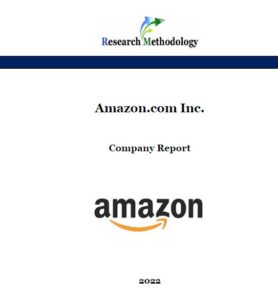
Amazon.com Inc. was founded in 1994 in Washington and Amazon.com as a website became first active in July 1995 to become the largest online retailer in the world to offer Earth’s Biggest Selection in less than two decades. The e-commerce and cloud computing company generated revenues of USD 386 billion and earned a net income of USD 21.3 billion in 2020 alone (Annual Report, 2020) The e-commerce giant employs approximately 1,3 million full-time and part-time employees referred to as Amazonians (Annual Report, 2020). Amazon has declared its adherence to four principles: customer obsession rather than competitor focus, passion for invention, commitment to operational excellence and long-term thinking. These principles represent sources of Amazon’s competitive advantage. Amazon business strategy is a hybrid of cost leadership and business diversification. The online retailer also benefits from encouraging communication between various elements within its ecosystem and promotion of its leadership principles consisting of 16 points discussed in this report. The founder and former CEO Jeff Bezos prefers to base business strategy on things that do not change. Specifically, consumers will always want low prices, variety and speedy delivery of their orders. Amazon focuses on these facts via effective integration of information technology into various business processes. Combination of pragmatist, visionary and autocratic leadership styles are exercised at various levels at Amazon. The company has a hierarchical organizational structure. Nevertheless, it remains highly flexible to adapt to frequent changes in the external marketplace. Amazon organizational culture, on the other hand, is based on the principles of high level of cost-consciousness, constant reinvention and improvement of organizational culture and customer obsession. Major weaknesses associated with Amazon include seasonality of the business, low profit margins and lack of focus on specific product or service categories. Moreover, a weak competitive position of Amazon’s Fire Phone and damage to…

Search About us Number of ebooks 300+ Started in 2011 by John Dudovskiy, research-methodology.net is an educational portal that offers knowledge, resources and practical insights for conducting business studies. John Dudovskiy is a seasoned dissertation adviser and he has experience in assisting hundreds of students with their dissertations, reports and essays in business discipline. All materials published at research-methodology.net are designed to support and inspire professionals and students at all levels to conduct studies in the area of business. read more Business Analytical Tools SWOT is a strategic analytical tool for assessing strengths and weaknesses of a business, analyzing available opportunities and threats faced by the business. SWOT analysis can be used at organizational and personal levels. Ansoff Matrix is a marketing planning model that helps the e-commerce and cloud computing company to determine its product and market strategy. Ansoff Matrix illustrates four different strategy options available for businesses. These are market penetration, product development, market development and diversification. PESTEL is a strategic analytical tool used to assess external factors affecting businesses. PESTEL acronym stands for political, economic, social, technological, environmental and legal factors impacting companies. PESTEL has recently evolved from PEST analysis once intensifying forces of globalization and intensifying forces of competition in the marketplace coupled with other set of factors increased the importance and potential impact of environmental and legal factors on businesses. The concept of marketing mix (also known as 7Ps of marketing) comprises elements of the marketing mix that consists of product, place, price, promotion, process, people and physical evidence. Companies manipulate with each element of the marketing mix according to its marketing strategy, as a part of its business strategy. Segmentation, targeting and positioning involves a set of consequent marketing decisions that constitute the core of company’s marketing strategy. Segmentation refers to dividing population into…

Airbnb corporate social responsibility is closely associated with business model of the travel industry disruptor. It can be argued that travelling via Airbnb instead of hotels results in significant reduction in energy and water use, greenhouse gas emissions, and waste, and encourages more sustainable practices among both hosts and guests. CSR Programs and Initiatives Airbnb Supporting Local Communities Airbnb employees receive four hours of paid time off every month to volunteer in their local communities.[1] Global Citizenship Champion program launched in 2013 involves organizing charitable contributions to causes important to their local communities in 20 cities around the world Champions within the scope of Global Citizenship Champion program completed more than 17000 hours of service in 2016. Airbnb runs Open Homes program that provides homes for free to those affected by conflict, disaster, or critical illness. The program has helped more than 25,000 people in need to find temporary housing and in 2019 the company is investing USD 20 million to grow the platform. Airbnb aims to house 100,000 people by 2022.[2] Airbnb and Gender Equality and Minorities Diversity is one of the core values at Airbnb. 48.94% and 43.85% of employees are female, globally and in the US respectively. The figure 10 below illustrates race and ethnicity representation at Airbnb in the US. Ethnicity representation at Airbnb in the US Airbnb has “Diverse Candidate Slates” rule. For every open position, women and underrepresented minorities must be included on candidate slates before those slates are presented to hiring managers and the manager is allowed to proceed with filling the position.[3] The peer-to-peer lodging company has a wide range of Airfinity groups that create more awareness and advocacy around the issues employees value. Airfinity employee groups include Able@ for employees with disabilities, AirPride@ for LGBTQ people, Asians@, Black@, Foreignairs@, Juntos@,…
September 24, 2019
By John Dudovskiy
Category: Corporate Social Responsibility
Tags: hospitality, IT
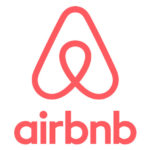
People-to-people platform of Airbnb benefits all its stakeholders, including hosts, guests, employees and the communities in which it operates. According to its CEO, Airbnb is “a more vertically integrated, end-to-end, full-stack ecosystem powered by people.”[1] Generally, Airbnb ecosystem can be divided into two groups: narrow and broad. Narrow Airbnb ecosystem comprises services that directly generate revenues for Airbnb, while broad ecosystem contributes to the development of peer-to-peer lodging, travel and experiences industry in general. Airbnb ecosystem in a narrow level integrates the following types of services: Accommodation Experiences Adventures Restaurants The travel industry disruptor supports stakeholders in its narrow ecosystem in various manners. For example, in a rare event of accidental damage, the property of every Airbnb host is covered up to a million dollars.[2] Airbnb has caused an ecosystem of new start-ups that produce products and services for peer-to-peer lodging industry. This can be specified as broad Airbnb ecosystem and includes a range of products and services. Table below illustrates the most popular types of such services referring to notable examples: Products and services within Airbnb ecosystems Notable examples Cleaning services of properties FlyCleaners: On-Demand Dry-Cleaning App Proply: Full-service cleaning, key delivery, welcome gifts and restocking Porter: laundry, cleaning, restocking Property management for hosts Guesty: responding to guest inquiries, screening potential guests, coordinating key exchange etc. Urban Bellshop: check-in, listing management, cleaning Nest: controlling temperature, Analytics Beyond Pricing: automated pricing suggestions Smart Host: pricing advice Everbooked: pricing suggestions based on a wide range of factors Services within broad Airbnb ecosystem Additional products and services within Airbnb broader ecosystem include automating check-in process, providing keyless entry around the clock, concierge services and welcoming guests and software products such as data presentation and analytics. Moreover, physical products such as toiletries, remote locks, and noise signallers and financing services for Airbnb hosts…

Airbnb McKinsey 7S model illustrates the ways in which seven elements of businesses can be aligned with positive implications on the overall effectiveness of the business. According to this framework strategy, structure and systems are grouped as hard elements, whereas shared values, skills, style and staff are considered soft elements. According to McKinsey 7S model, there are strong links between individual elements. Specifically, a change in one element causes changes in others. As it is illustrated in figure below, shared values are positioned at the core of Airbnb McKinsey 7S model; they guide employee behaviour with implications on their performance. Airbnb McKinsey 7S model Hard Elements in Airbnb McKinsey 7S model Strategy. Airbnb business strategy is associated with platform business model and accordingly, instead of owning the services it offers, the company engages as a broker between suppliers and consumers, receiving a commission of 9% to 15%. Moreover, increasing level of technological integration into various aspects of the business can be specified as one of the critical features of Airbnb business strategy. The global hospitality service brokerage company also places its community and trust among organizational stakeholders at the forefront of its business strategy. Structure. Airbnb organizational structure can be classified as matrix. The workforce is divided into teams of up to 10 people. Importantly, teams support each-other to a great extent. Team leaders and members feel free to ask other teams if they need resources or capabilities. Airbnb organizational structure can be also branded as holocratic, because decision making power is given to teams throughout organization to a great extent and majority of teams are self-managed. The corporate structure of Airbnb is highly dynamic due to rapidly increasing scale of the business worldwide. Systems. Airbnb business operations depend on a wide range of internal systems such as employee recruitment and…
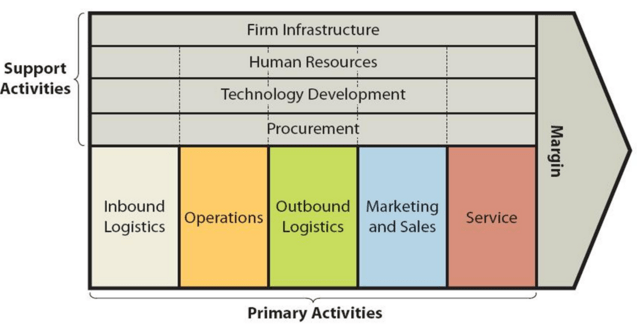
Airbnb value chain analysis is an analytical framework that assists in identifying business activities that can create value and competitive advantage to the global rental and experiences platform. Figure below illustrates the essence of Airbnb value chain analysis. Airbnb Value Chain Analysis Primary Activities in Airbnb Value Chain Analysis Airbnb Inbound logistics In traditional businesses inbound logistics involve receiving and storing raw materials to be used to manufacture products. Inbound logistics is different in service industry in general and online service in particular due to differences between products and services that include inseparability, intangibility, perishability and heterogeneity. From this perspective, Airbnb inbound logistics can be divided into two groups: 1. Inbound logistics related to core services. Core services for the company comprise peer-to-peer listings of accommodation, experiences and adventures. Airbnb inbound logistics for its core services takes a few minutes thanks to purely online nature of its business. Specifically, hosts can list their properties or experience services on the website of the lodging colossus on a matter of a few minutes. Therefore, inbound logistics of each new addition to its website comes for no extra cost for Airbnb. 2. Inbound logistics of resources and items that are used to aid the facilitation of core services. The global hospitality service brokerage company also uses a range of physical resources such as stationary items for its offices. Moreover, products like pillows and mugs, distributed to hosts occasionally to motivate them can also be mentioned as resources acquired by the travel industry disruptor to aid the facilitation of core services. Economies of scale can be specified as the main source of value addition in Airbnb inbound logistics of items that aid in facilitation of core services. Airbnb Operations Generally, operations involve the transformation of raw materials into finished products in manufacturing…
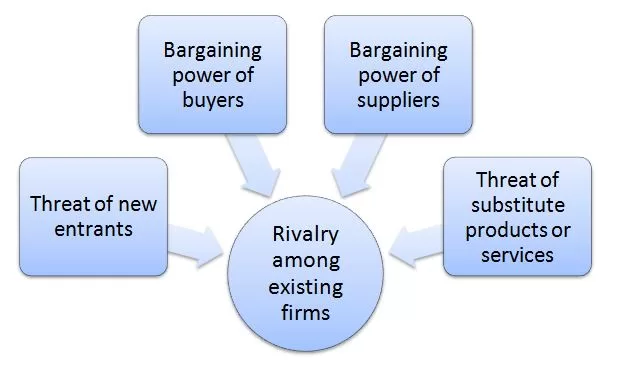
Porter’s Five Forces analytical framework developed by Michael Porter (1979)[1] represents five individual forces that shape an overall extent of competition in the industry. Airbnb Porter’s Five Forces Analysis are illustrated in Figure 1 below: Figure 1 Airbnb Porter’s Five Forces 1. Threat of new entrants in Airbnb Porter’s Five Forces Analysis The threat of new entrants into pear-to-pear lodging industry is low. Theoretically, setting up a website should suffice to enter the industry. However, in practice there is a number of barriers to potential new entrants into peer-to-peer lodging industry. These include the following: 1. The time of entry. In e-commerce the role of the first mover advantage is usually paramount and it is usually very difficult if at all possible for the followers to even get close to the market disruptor. Once their business model proved to be viable, internet-based market disruptors such as Amazon, Facebook and Uber were able to gain large market share in the global marketplace in a short amount of time. Funding from investors, word-of-mouth, effective management and hype usually play an instrumental role in assisting e-commerce disruptors to secure their niche and strengthen their position in international markets. This was the case with Airbnb as well. Founded in 2008, the company became a leading global hospitality service brokerage company within a matter of a few years. As of summer 2019, Airbnb boasts More than 6 million listings in more than 191 countries and regions worldwide.[2] The word Airbnb became a synonym for peer-to-peer lodging, leaving little room and market for potential new entrants. Nevertheless, it would be naive to claim that the threat of new entrants does not exist. There is no limit on the numbers of times that a market can be disrupted and as such, any new company with another innovative idea…
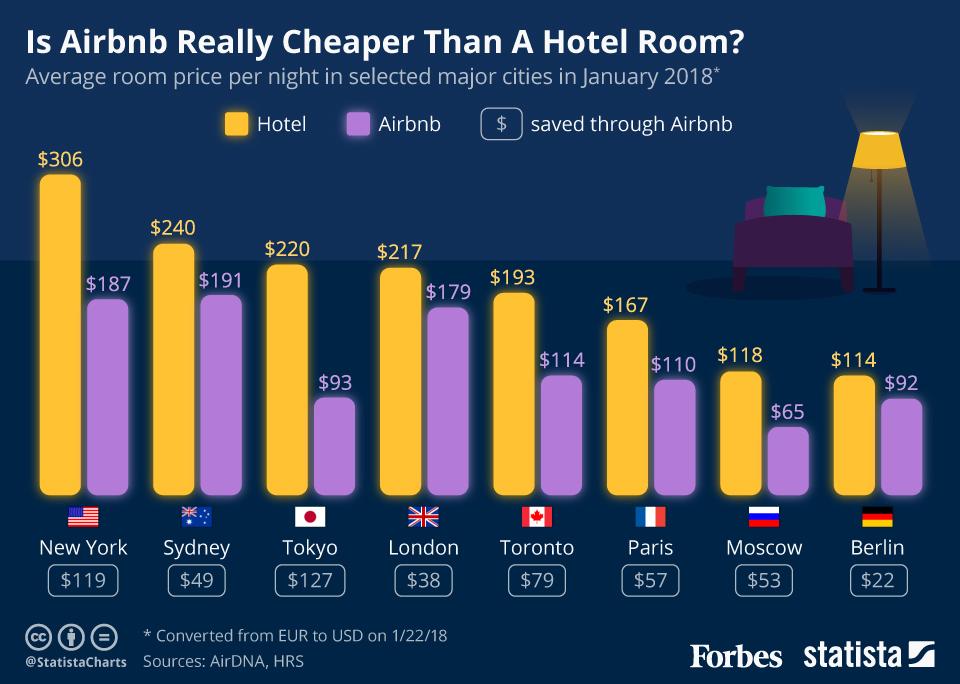
SWOT is an acronym for strengths, weaknesses, opportunities and threats related to organizations. The following table illustrates Airbnb SWOT analysis: Strengths 1. First mover advantages 2. Cost attractiveness for customers 3. Impressive growth rate 4. Airbnb adventures Weaknesses 1. Inability to control service quality 2. Vulnerability of brand image 3. Replicable business model 4. Absence of reception, housekeeping and room service Opportunities 1. Brand extension 2. Further international market expansion 3. Further technological integration 4. Formation of new strategic alliances Threats 1. More legal issues 2. Scandals 3. Emergence of new competition 4. Loss of key members of workforce Airbnb SWOT analysis Strengths in Airbnb SWOT Analysis 1. Airbnb has a first mover advantage in peer-to-peer lodging industry. First mover advantage has played an instrumental role for Airbnb in terms of establishing strong brand recognition and achieving private brand valuation at USD 35 billion.[1] Thanks to first mover advantage coupled by effective leadership by founders Brian Chesky, Joe Gebbia and Nathan Blecharczyk, the word Airbnb has become synonym for peer-to-peer lodging practices. Moreover, it can be argued that first mover advantage immensely contributes to Airbnb brand loyalty by rapidly expanding its customer base. 2. Airbnb is more cost attractive compared to traditional hotels and this is one of the major strengths points of its customer value proposition. As it has been illustrated in figure below, as of January 2018 average room prices per night are considerably lower at Airbnb compared to average room prices of hotels and this difference is the biggest in New York at USD 119. Operating rooms via Airbnb does not require 24 hours check-in desk, concierge, administration office and management apparatus like hotels, therefore at Airbnb a part of the cost advantage is passed to consumers. Average room prices in selected major cities in January 2018[2]…

Airbnb marketing communication mix as a framework explains how the global lodging company uses individual elements of marketing communication mix. Elements of marketing communication mix according to this framework consist of print and media advertising, sales promotion, events and experiences, public relations, direct marketing and personal selling. The patterns of use of these elements by Airbnb is explained below. Airbnb Print and Media Advertising Despite the purely online nature of its business model, Airbnb uses print and media advertising extensively. The accommodation and experience marketplace launched Airbnb Magazine in May 2017 distributed in the U.S., with the exception of a small number of copies that will be available for sale in London priced at USD 3,99.[1] Airbnb magazine is a highly dynamic print media platform that responds to the interests of the company’s target customer segment. It has been noted that if Airbnb “algorithms see that users are increasingly searching for ‘Paris’, it notifies the magazine’s editorial staff to whip up a story or two on the French capital.”[2] It has also been speculated that the global hospitality service brokerage company has plans to create its own TV shows in order to encourage people to travel more. As a starting point “Airbnb has reportedly worked on a TV show called Home for Apple’s new TV Plus subscription service; the show focuses on unearthing unique living spaces around the world and the people who reside there”[3] Although Airbnb did not use celebrity endorsements up to date, the global rental and experiences platform effectively uses the use of its services by celebrities as a part of its marketing strategy. For example, the lodging company promotes luxury mansions and villas where celebrities such as Arianna Grande, Lady Gaga, Britney Spears and Channing Tatum have stayed using Airbnb. Viral marketing is also used by Airbnb…
